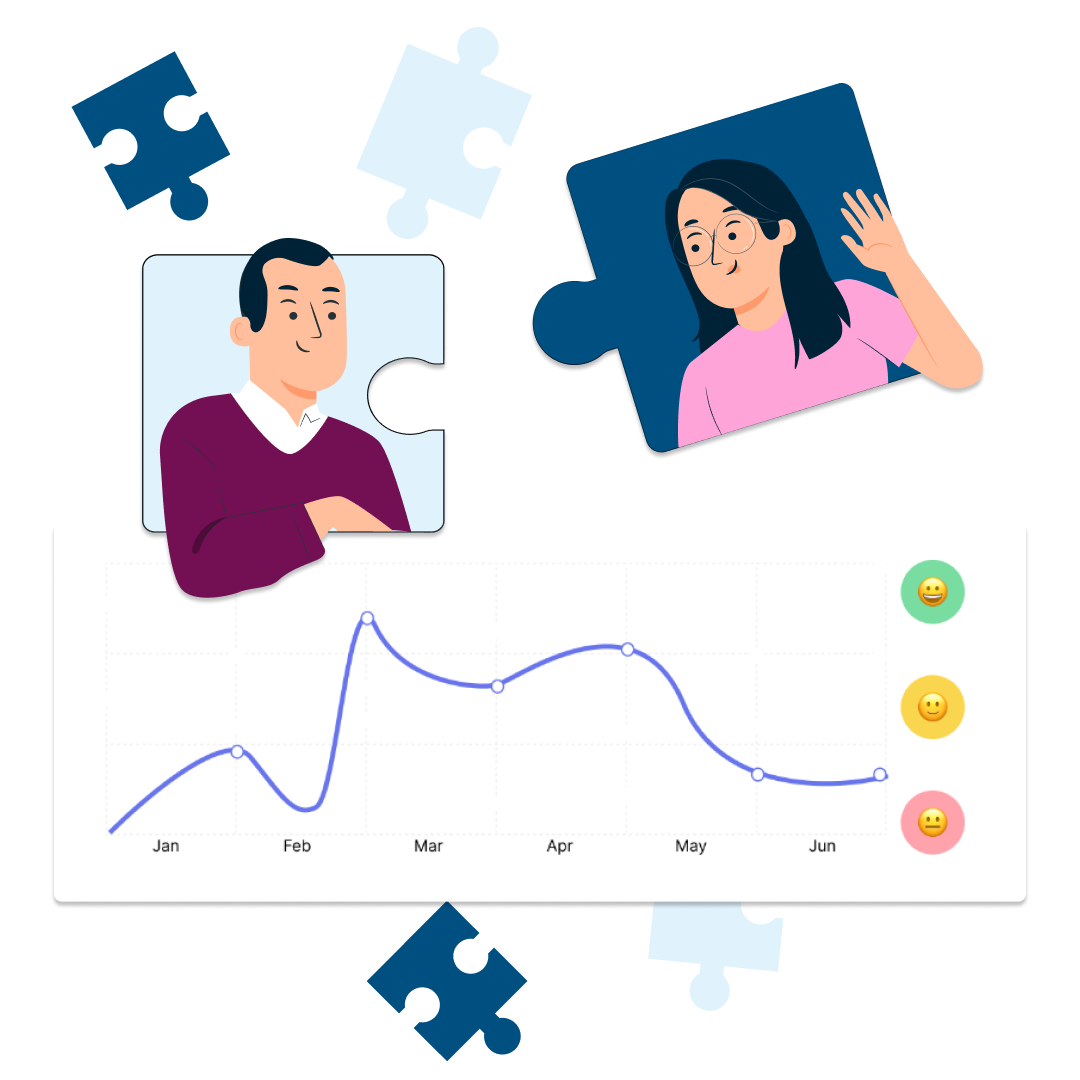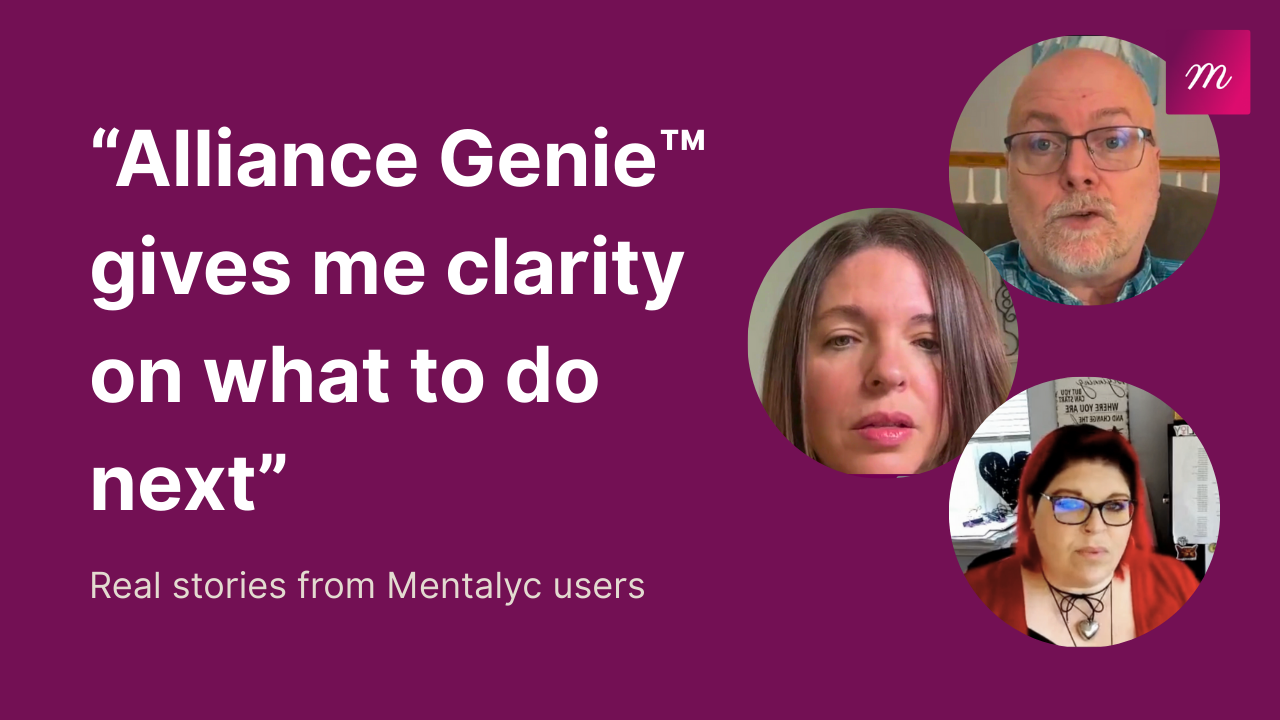Feedback Informed Treatment (FIT) is a working model for integrating client feedback into treatment from therapist session to session. It uses brief, standardized assessments of client wellbeing and the therapeutic working relationship to enable therapists to guide midcourse.
We therapists try to form rich, healing relationships with our clients, but we labor in the dark without access to realtime, specific feedback about precisely what is happening to them. We have to rely on our training, therapeutic sensibility, and the odd bit of verbal comment to have some notion whether things are proceeding all right, but the reality is that clients drop out of therapy without notification or reason, and the implicit failures within the therapeutic partnership will not be apparent until they result too late.
Emerged by psychologist Scott D. Miller, Feedback Informed Treatment (FIT) offers a structural, empirically based approach to overcoming these kinds of challenges.
Instead of advocating for a particular modality of treatment, FIT is pan-theoretical in nature and can be implemented with any clinical approach. Its primary aim is to keep the client’s voice in the foreground of care—something that we all aim for but are unable to translate in our actual work. This article serves as an introduction for therapists who would like to learn about FIT, how to utilize it, and how to maximize therapeutic benefits in various environments.
Essential Principles of Feedback Informed Treatment
There is a major focus on client-centered practice at the heart of FeedbackInformed Treatment. FIT relies on four essential principles:
- Pan-theoretical Application: FIT is not a standalone modality. It is flexible to be used with any of the prominent theoretical orientations, from psychodynamic and cognitive-behavioral to narrative and somatic. It does not replace a therapist’s preferred model but complements it by incorporating systematic client feedback.
- Therapeutic Alliance and Outcome: Therapeutic alliance has long been regarded as the best general predictor of positive outcome. FIT emphasizes close attention to frequent checks on this alliance, enabling therapists to address emergent ruptures prior to disengagement and dropout.
- Continuing Outcome Monitoring: FIT requires continuous measurement of clinical improvement using client-reported outcomes. This allows therapists to see trends over time and be able to identify when a client is not improving—or, in some instances, is worsening—despite multiple sessions.
- Evidence-Based Flexibility: FIT is informed by decades of psychotherapy research and outcome studies. FIT invites practitioners to be humble, curious, and adaptable, willing to change their approach based on what is empirically effective with a client they are seeing.
Key Feedback Informed Treatment Measures
FIT employs two principal tools: the Outcome Rating Scale (ORS) and the Session Rating Scale (SRS). Each is a four-item, brief, four-point visual analog scale that takes less than one minute to administer.
- Outcome Rating Scale (ORS): Filled out at the beginning of every session, the ORS allows clients to measure their overall feeling of wellbeing in four domains: personal (self), interpersonal (family and close friends), social (work, school, or general community), and overall functioning. The hope is to track improvement (or not) week to week.
- Session Rating Scale (SRS): Completed at the end of the session, the SRS measures the client’s rating of the process and working relationship of therapy. The SRS consists of ratings of feeling heard and understood, goal agreement, relevance of the session, and overall fit. The ratings provide immediate feedback on the quality of the alliance.
Both instruments can be given either by pencil and paper or online through any number of platforms. Both are designed to be straightforward, with the aim of providing candid and honest feedback that can then be freely explored between client and therapist.
Applying Feedback Informed Treatment to Clinical Practice
Its implementation into daily clinical work requires technical application and cultural mindset. It starts with sharing the ORS and SRS with clients openly and in collaboration. Therapists should communicate that the purpose is to render therapy efficient, responsive, and significant from the client’s own perspective.
Every session starts with the ORS. This can be as easy as having them complete the scale while they get their blood flowing. Going over scores with them starts a short but significant conversation regarding how they have been functioning since the previous session. Decreasing or falling scores indicate it is time to reevaluate the focus or treatment mode.
The session concludes with the SRS, allowing clients to consider how the session felt to them. While some clients score high by default because of politeness or shyness, cultivating over time an attitude of openness can assist clients in being honest in their answers. When lower scores are observed, therapists can be encouraged to challenge them non-defensively—allowing for discussion and repair as needed.
Most fundamentally, FIT is not strict measurement adherence; it is a culture of feedback-informed practice in which clients can be enabled to engage in the recovery process, and practitioners can be enabled to be responsive and flexible.
Benefits of Feedback Informed Treatment
There are numerous studies that illustrate the clinical utility of FIT. Some of the most extensively researched benefits are:
- Augmented Therapeutic Alliance: FIT increases the therapeutic relationship through continuous seeking of feedback. Clients hear themselves, feel heard, and are respected as colleagues in their therapy.
- Increased Retention Rates: Client-therapist mismatch is the single best predictor of dropout. FIT anticipates this by catching early indicators of ruptures in the alliance, reducing early termination.
- Enhanced Client Outcomes: Research illustrates that FIT therapists observe more stable client improvement in functioning, particularly for those higher-risk clients who are at risk of treatment failure.
- Accelerated Treatment Completion: FIT has the potential to expedite treatment by nailing down and capitalizing on effective interventions sooner, enabling clients to meet their goals within fewer sessions.
By including client feedback as an integral part of treatment, FIT not only adds to the worth of the therapeutic session but also acts to empower practitioners to enable accountability and professional growth.
Challenges and Considerations
While FIT is extremely useful, using it is not without issue. Therapists will first feel vulnerable or defensive to receive feedback, particularly if scores are lower than hoped for. This is to be expected and highlights the benefit of supervision, peer consultation, and self-reflection.
Patients will take some time to acclimatize to the process. Some will interpret the forms as “tests” and some will avoid giving negative comments in case they cause offense to the therapist’s feelings. De-dramatizing the process, stressing the intention, and repeatedly affirming a safety and collaborative culture is important.
Logistical difficulties are present in time or technology-limited settings. Still, even sporadic or partial use of the ORS and SRS will begin to foster a cultural shift toward client-centered practice.
FIT in Diverse Settings
A second benefit of FIT is its flexibility with treatment environments:
- Individual Therapy: FIT comfortably integrates into individual therapy, offering realtime feedback of a client’s movement and experience.
- Group Therapy: While more complex, FIT can be adapted to measure group cohesion and individual outcome, specifically in psychoeducational or skill groups.
- Family and Couples Therapy: Individual ORS and SRS forms can be completed by all members so communication can be easy and changes in relational patterns can be monitored.
- Teletherapy: Digital media facilitate remote delivery of ORS and SRS. Thirdparty software and EHR systems can incorporate these formats in virtual sessions, providing continuity of care.
No matter where the location, the intent remains the same: increasing client voice, openness, and collaboration.
Training and Resources for Feedback Informed Treatment
While ORS and SRS are easy to use, learning FIT requires more than instrument use. There is training, thinking, and even supervision that must be completed in order to learn to score and respond to client feedback in a clinically useful way.
Valuable resources include:
- ICCE (International Center for Clinical Excellence): Offers manuals, implementation guidelines, and training courses.
- Better Outcomes Now: A webbased site providing access to the ORS/SRS, data tracking, and clinical support materials.
- FIT Workshops and Certification: Accessible through the ICCE and training sites in collaboration for intense skill gain by clinicians.
Urge clinicians to start small, maybe try it with a few clients, before implementing FIT with a whole caseload or agency.
Takeaways
FeedbackInformed Treatment gives us a robust, evidence-based approach for optimizing therapeutic impact, enhancing the alliance, and keeping the client’s voice at the center of clinical decision-making. Through the application of brief but effective feedback measures in our practice, we are in a position to provide more responsive, person-centered treatment and reduce risk of dropout or disengagement.
For therapists, FIT isn’t a set of tools, it’s a shift in attitude. It means we must stretch beyond assumptions, become open to feedback with a curiosity of openness, and view the therapeutic relationship as a dynamic, co-constructed process. As we go forward dealing with ever more complex client needs in an ever more changing healthcare environment, FIT offers a client-driven, sustainable path forward.
Frequently Asked Questions (FAQs)
How is FIT different from other forms of therapy?
FIT is not a treatment model or school of thought. FIT is a meta-framework that lends additional strength to any particular approach by incorporating client feedback into the therapy process.
Is FIT usable with all populations of clients?
FIT has been effectively applied with all ages, diagnoses, and cultures. Certain accommodations can be made when working with children, nonverbal clients, or clients with impaired cognitive functioning.
Can FIT be integrated with other modalities like CBT or EMDR?
Yes. FIT was never designed to be a competitor but an adjunct to other modalities. FIT can be utilized as an additive to the standard intervention in that it provides the realtime feedback regarding whether the techniques are working for a particular client.
What are the costs of integrating FIT into practice?
Paper records of ORS and SRS are free but with a fee for online websites with additional features. Training fees also vary by format and level of certification.
References
Delgadillo, J., McMillan, D., Gilbody, S., de Jong, K., Lucock, M., Lutz, W., … & Ali, S. (2021). Cost-effectiveness of feedback-informed psychological treatment: Evidence from the IAPT-FIT trial. Behaviour Research and Therapy, 142, 103873.
Axelsson, S., Kihlberg, S., Davis, P., & Nyström, M. B. (2024). Psychotherapy students’ experiences of supervisee‐centred supervision based on deliberate practice, feedback‐informed treatment and self‐compassion. Counselling and Psychotherapy Research, 24(2), 719-733.
Barkham, M., De Jong, K., Delgadillo, J., & Lutz, W. (2023). Routine outcome monitoring (ROM) and feedback: Research review and recommendations. Psychotherapy Research, 33(7), 841-855.
Bovendeerd, B., De Jong, K., De Groot, E., Moerbeek, M., & De Keijser, J. (2022). Enhancing the effect of psychotherapy through systematic client feedback in outpatient mental healthcare: A cluster randomized trial. Psychotherapy Research, 32(6), 710-722.
Why other mental health professionals love Mentalyc

“It’s really giving me some good confidence … and areas of improvement to see nuances I didn’t see before.”

“It keeps me on a level of assessment about the relationship that has a little bit more objectivity … helps keep me grounded.”

“There is a lot more feedback and suggestions in it than before … that makes things a little bit easier for me.”

“Reading transcripts helps me tighten up and come across more the way I want to present myself to clients … it’s helped me improve and keep getting better.”
Licensed Marriage and Family Therapist







